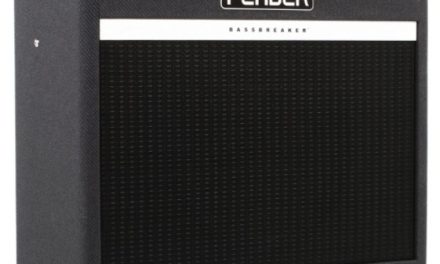I’ve started writing for my next album, and I’ve been binge watching home recording studio tours. Much like the world of guitar, the world of home recording is full of great, inexpensive products and great crazy expensive products. If you’re new to home recording, this can be very confusing. So here are 10 ways you can save money in YOUR home recording studio.
- Build for NOW. You might be setting up your studio for your own personal use, but have dreams of one day recording entire bands. DON’T buy the stuff to record bands now, unless you’re planning on recording bands within the next two years. When looking at tech, understand that everything in the future is going to be less expensive and in many cases better. Five years ago it would have cost a fortune for a 16 channel mixer that can record to 16 tracks at the same time. Now it’s under $800.
- Buy a Rode NT1A. Just do it. It came out a long time ago, it has stayed around the $200 price range, and you can use it on almost anything and it’s still the best $200 mic out there.
- Buy a Shure SM57. You’ll be surprised how good it sounds on a guitar cab, half an inch from the grill cloth. You’ll see tons of YouTube folks pairing it up with a thousand dollar ribbon mic. That’s great, if you have the money. But you’ll get a sound almost as good as that for a tenth the cost.
- Build your own vocal booth from PCP pipe. I just finished my build. I’d say I spent around a hundred dollars and now I have a great sounding vocal booth that I can take down in 10 minutes. THIS IS IMPORTANT – for $100 and some of your time, this vocal booth will improve the sound of any mic you have. It’s a no-brainer. Search for homemade vocal booth on YouTube.
- Buy a Focusrite 2i2 USB audio interface, if you don’t already have a USB audio interface. Like the Rhode NT1A, there’s a reason you see these everywhere – they’re the best for the money. Get the two channel, not the single channel, because you’ll eventually need it.
- Don’t drop a ton of money on an expensive preamp. It’s going to cost you $500-$700 and give you a 10% boost in quality. For that kind of money you’d be better off getting a more expensive mic.
- Get a small, decent USB mixer that has built-in reverb and use that as your monitoring mixer. If it has compression, even better! Record everything through your USB device. Don’t record through an inexpensive mixer. Use the mixer for monitoring.
- Get a good keyboard (as in piano) controller and don’t buy actual synths. If you’ve got a halfway decent DAW, you’ll already have access to almost all of the keyboard sounds you’ll need. Logic Pro X is $199 and comes with more than enough options for keys. Synths
- Avoid buying the rackmount gear. You’ll see people proudly displaying all of their rackmount gear in those YouTube home studio tours. What you won’t see is a copy of their bank statement. Good rackmount gear is expensive, and what might cost you $800 in real life might only set you back $39 in plugin form. The plugin will sound 80% as good as the original for a whole lot less money.
- Consider buying a tube amp over modeling. Years ago I bought a POD 2. I loved it and I used it on my first two albums. Sounds good in a mix. But I upped my game a lot when I got a great tube amp and an SM57. And here’s the thing – today’s expensive modeling technology is tomorrow’s budget sale item. Emulation is going to continue to improve, and the older emulators will become obsolete in time. Tube amps and really good dirt pedals will keep their value much better.
- BONUS tip – If you’re REALLY strapped for cash, ignore #10 and grab a used POD 2 for next to nothing. For a small investment of, say, $40, you can put down some guitar tracks that will work fine in a mix. That’s a hell of a lot less than a good tube amp.
You can see an 80/20 rule in effect for a lot of this. You’ll get 80% the result for 20% of the cost when you use, say, a POD 2 over a tube amp. Or a tube amp over an expensive modeler. Of a plugin over a rack mounted outboard effect. Or the NT1A over a thousand dollar mic. The catch is that if you go too budget, you’ll end up with junk you won’t need in the future. Hence my recommendations – microphones are almost always still usable in the future. So are tube amps and good pedals.



